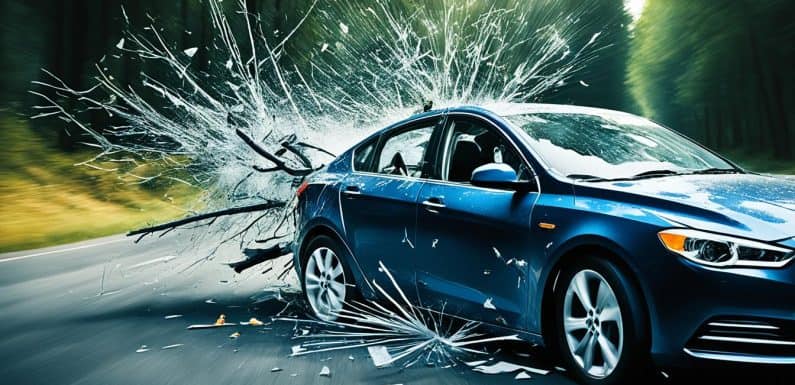
When a collision occurs, the science behind windshield accidents comes down to basic physics. The primary natural law explaining why drivers going through the windshield is Newton’s laws of motion, especially inertia. This devastating consequence of a crash can be understood by examining the physics of windshield collisions and the causes of drivers going through the windshield. By delving into these scientific principles, we gain insight into the often tragic outcomes of vehicular accidents and highlight the importance of preventive measures.
Key Takeaways
- Newton’s laws of motion, particularly inertia, are pivotal in understanding drivers’ ejection through windshields during accidents.
- The forces of gravity, inertia, momentum, and kinetic energy collectively influence the severity of windshield accidents.
- Preventive safety measures, such as seat belts, play a crucial role in mitigating the risks associated with these forces.
- An understanding of the scientific principles behind impacts can lead to better safety designs and practices in the automotive industry.
- Educational campaigns highlighting the physics of collisions may encourage stricter adherence to road safety regulations.
- Improving vehicle safety standards could reduce the incidence of drivers and passengers experiencing severe trauma in collisions.
The Role of Inertia in Road Accidents
Understanding the principles of physics is crucial when investigating the dynamics of road accidents. In particular, the role of inertia in collisions cannot be overstated. As we delve into the mechanics behind these unfortunate events, we consider various factors that contribute to the severity and outcome of accidents on the road.
Newton’s First Law of Motion and Vehicle Collisions
The fundamentals of vehicle behavior during a crash can be traced back to Newton’s first law of motion. Often referred to as the law of inertia, it explains that a car moving at a high speed will continue to do so unless an external force, such as the braking system or a collision with another object, compels it to stop. This tendency plays a pivotal role in inertia-related road accidents, influencing the force at which a vehicle strikes another object or comes to a sudden halt.
Gravity’s Impact on Collision Outcomes
Gravity also has a critical, yet often overlooked role in accident outcomes. Gravitational forces affect vehicle stability and can determine how a car behaves upon impact. During an accident, gravity can influence the trajectory, rollover potential, and the ultimate resting position of vehicles, significantly impacting both the method of collision and its consequences.
Kinetic Energy During Sudden Stops
In the context of road safety, kinetic energy must also be taken into account. When a vehicle stops abruptly, the kinetic energy built up during motion is rapidly transferred, resulting in forceful impacts that can cause severe injuries to passengers. The transformation from kinetic energy to impact force exemplifies the potential for harm in sudden stops, highlighting the need for effective safety mechanisms in automobiles.
Importance of Proper Seat Belt Use
The significance of seat belts in vehicular safety is irrefutable. Not merely a passive accessory, seat belts are a pivotal component in safeguarding passengers against extreme harm during traffic incidents. Empirical data continuously reinforces the role of seat belts in preventing injuries, crediting them with countless lives saved each year. The restraint system designed into seat belts is crucial; it keeps occupants securely inside the vehicle, drastically reducing the risk of them striking the interior, being ejected through the windshield, or worse.
Understanding the benefits of wearing seat belts goes beyond the obvious prevention of ejection from the vehicle. Seat belts are engineered to distribute the forces endured during a collision across the stronger parts of the physique, such as the pelvis and ribcage, significantly diminishing the likelihood of fatal injuries. The truth is, the convenience of seat belts can turn into the difference between life and death. Statistics show that proper seat belt usage importance cannot be overstated, as they decrease the risk of death for front-seat passengers by up to 45% and the risk of moderate to critical injury by up to 50%.
Yet, myths and overconfidence often contribute to a hesitation to buckle up. Some believe that seat belts aren’t necessary for short trips or at lower speeds, while others may find them restrictive or uncomfortable. Nonetheless, these minor inconveniences pale in comparison to the protection seat belts provide in the volatile moments of a crash. Adopting the ritual of strapping in every time you get into a vehicle fortifies not just your safety, but the safety of everyone on the road. Cultivating a culture of routine seat belt use is not just a personal responsibility; it acts as a collective stride towards greater road safety for our communities.
